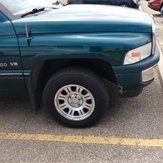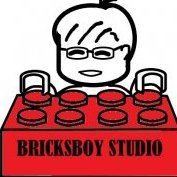Search the Community
Showing results for tags 'technic'.
Found 1582 results
-
Model of a New Flyer XD40 transit bus in MTA livery. The model has roughly 3800 pieces. Features motorized drive, steering with working steering wheel, passenger doors, and a removable Cummins engine model with moving pistons. Functions/features: Drive Steering with working steering wheel Remotely controlled doors Removable Cummins engine model with moving pistons Instructions available on Rebrickable: https://rebrickable.com/mocs/MOC-153565/JLiu15/2015-new-flyer-xd40-mta-bus/#details Because my NJ Transit New Flyer XD60 model was a huge success, I decided to reuse my design and make another Xcelsior model - this time a XD40 in MTA colors. Unlike my NJT XD60 model which has the livery done entirely using stickers, the blue stripe livery MTA used prior to 2016 is easy to design with blue LEGO pieces. As a result, the model is recognizable as a MTA bus even without stickers, which is why I specifically included "MTA Bus" in the name. The model is not simply my XD60 model cut shorter. The chassis is redesigned from scratch. The front and rear axles are placed at a half-stud offset to allow for smaller wheel arches. The XL motor for drive is placed in front of the rear axle instead of behind it to allow space for the Cummins engine model. The battery is placed much higher and is accessible by removing the upper rear body panel. I added a switch on the roof to allow the battery to be turned on without removing the body panel, so it only needs to be removed for charging. There are also no supports in the chassis for the rear door as the rear door on MTA Xcelsiors open outwards, and the front of the chassis is redesigned to accommodate both the mini linear actuator for the front door and the connection from the steering wheel to the Servo motor for a working steering wheel. Lastly, the chassis is also designed to specifically accommodate for MTA's seating layout, most notably with only a single seat per row on one side in the low floor section. Like my XD60 model, there is also a roof frame that holds both motors for the doors as well as the rear door mechanism (which uses the same general principle as the inward-opening front door despite opening outwards). The roof frame is attached to the chassis using beams, making for a robust "skeleton" that the body is built around. The bodywork has also been redesigned in several places. The wheel arches are now smaller due to the half stud offset of the front and rear axles, although I had to use inverted slope pieces instead of arch pieces to allow the blue stripe to be built entirely in LEGO. This means the wheel arches are not perfectly curved here, but I found it to be a fair compromise for making the entire blue stripe in LEGO. The front lower body panel is one stud higher here compared to my XD60 model, although it kind of makes it look like the front of a MTA Orion VII NG (MTA Xcelsiors in the blue stripe livery have the bottom edge of the front windshield curve downward slightly, and such a curve would be very difficult to model in LEGO at this scale. The rear body panels use a simpler and more robust design, the front roofline curves are angled slightly outward (the space between them was increased by 2 studs), and the side body panels are attached to the chassis/roof frame using white 1x1 Technic bricks with axle hole and part 27940 in white. This allows for a seamless body without pins showing; part 27940 in white was not yet available while my XD60 model was being built. The roof is primarily built using 6x6 tiles this time instead of 5x11 Technic panels - because MTA's 2015 XD40s do not feature a full roofline, the transition from the side body panels to the roof is much more noticeable here which is why I went with the tiles. The model's functions all worked well. The single XL motor was more than enough to power the model, especially considering this model is lighter than my XD60 model. Although the moving pistons on the Cummins engine model are not easily visible (there's one piston visible under the last row of seats), I am happy that I was able to add some additional functionality to this model. And because the pistons are made using half bushes, the engine makes a nice sound while the drive motor is running. While designing my XD60 model I thought there was too little space in the front to incorporate a working steering wheel without compromising the rigidity of the chassis, but I was able to connect the steering wheel to the Servo motor just fine here. There is less reinforcement immediately in front of the front wheels so they don't collide with anything when steering, but the side body panels keep everything robust. I did not test the rear door mechanism before installing it on the model so I was concerned how well it will perform, but it is usually able to open the rear door fully with each door panel rotating 90 degrees. Sometimes the mechanism gets stuck while opening the door, but reinforcing the pieces a little usually solves the problem. While at first glance this MOC looks like my XD60 model shortened and without an articulation joint, it was really a new MOC from scratch. The chassis is completely redesigned and has little resemblance to the chassis of my XD60 model even without accounting for the lack of the articulation joint and a third axle. The bodywork was also improved in several places. All of the functions performed as expected, and the finished model is easily recognizable as a MTA XD40 even without stickers. Speaking of which, I decided to make my model bus 7225 operating out of Grand Avenue Depot in Brooklyn signed for route B62. Overall I am very satisfied with how my second bus MOC turned out, and I plan to continue making bus MOCs in the future, with one already in progress. Video: Photos: Brickworld Chicago Photos:
-
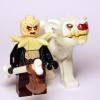
30655 Forklift with Pallet
R0Sch posted a topic in LEGO Technic, Mindstorms, Model Team and Scale Modeling
I'm so glad the Technic polybags are still on-going. The small ones deserve a separate topic too, so here you go. Set nr: 30655 Name: Forklift with Pallet Parts: 78 Age: 8+ Price: 3.99 Euro Release: January 1st 2023 -

[TC 25] 42055 C-Model: Mining tipper truck (rat race)
Timewhatistime posted a topic in LEGO Technic, Mindstorms, Model Team and Scale Modeling
Hi Eurobrickers, I really like the idea of the TC 25 shrinking contest, but unfortunately I won't be able to participate. This contest will give us a lot of creative mocs. In some cases the participants will choose the same set, which will give the opportunity to compare and appreciate the entries. Nice! Back in 2017, I built a simple small C-Model of (part of) the BWE set 42055: A shrinked version of the mining truck which was included in this set. It was also available as a single set (42035) some time before - rather this is the colour scheme my little C-model corresponds to due to the yellow panel. The main challenge was that it needed 4 wheels (= 12 t bevel gears), but 42055 includes (hard to believe...) only 3 pins for that purpose (tan 2L axle pins without friction tan). ;-) So the fourth axle ist a brown 3L axle with stop. Probably it won't meet the specifications of the contest because of the electric function... ;-) https://brickshelf.com/cgi-bin/gallery.cgi?i=6492892 Mining Truck 42055 C-model https://brickshelf.com/cgi-bin/gallery.cgi?f=569964 More pictures I didn't manage to insert a brickshelf-picture in this topic, so just use the links in case of interest. :-( -
I have been trying to find a place to post Mocs I have built from some of the designers here. (first to admit im pretty useless at anything computer related and may have missed something). But if there isn't such a place, is it possible to add one. ? A place where building, even an old, moc of someone's wouldn't require a dreaded " old post bump" to show it? Anyway that's all I have, and if I have completely missed a spot to do this, I guess this post is mute.......
- 9 replies
-
- technic
- model team
- (and 7 more)
-
Model of a Mack Granite truck equipped with a boom and flatbed. Features drive, steering, full suspension, motorized boom elevation, extension, and rotation, winch, and extending/lowering outriggers. Functions/features: Drive Steering Full suspension Boom elevation Boom extension Boom rotation Winch Outriggers Instructions available on Rebrickable: https://rebrickable.com/mocs/MOC-150955/JLiu15/mack-granite-boom-truck/#details After the 4-output distribution gearbox on my MCI D4500CT Commuter Coach model proved to be ineffective, I didn't want to simply abandon the gearbox design. I decided that I was going to tweak the gearbox a little to be used in a new MOC. I had wanted to use the same suspension setup for my MCI D4500CT model as a test bed for the suspension design, so I settled on incorporating the gearbox into a truck model. A boom truck like this is a MOC I had wanted to make for quite some time, as I see plenty of them in the US but not that many MOCs of them. Because the turntable for the boom is placed higher up, it leaves more room to route gears/axles from the gearbox to the 4 functions it controls. Because the gearbox sits in the heart of the chassis between the outriggers and rear axles, the chassis is built very densely. The gearbox makes use of two Control+ L motors: one for shifting and one for driving the output functions. The drive motor (a Control+ XL motor) sits directly behind the gearbox, and drive is transferred to the rear axles via an extendable CV joint. The drivetrain is geared down after the CV joint to reduce the amount of torque applied to it. Lastly, there is another Control+ L motor for steering which is built into the front axle. I designed the suspension (a simple live axle for all 3 axles) entirely in Stud.io before building it physically, so I had no idea how it would perform upon building it. However, the entire setup worked flawlessly, and there are no issues with drive transmission into the suspended rear axles. My initial plan for this MOC was to just build it as a generic US-style truck, but upon finishing the cab someone said it resembled a Mack Granite, so I modified the cab to actually make it based on the Mack Granite with the Mack Bulldog emblem from the 42078 Mack Anthem set in the front. A number of metallic silver elements are used in the front, although due to the relatively low number of pieces available in that color there is still plenty of gray in the front (such as the bumper). The Control+ hub is placed in the back of the cab and is removable for battery replacement by removing the roof, as the hub and roof are attached to each other. This means the sides of the cab must be sturdy to compensate for the relatively loosely attached roof, so the doors do not open on this model. I decided to build the cab in dark blue, a color I have not used much before, as I now have a sizeable collection of dark blue pieces from the 42083 and 42154 sets. I built the boom in yellow to contrast with the dark blue cab. The boom is built around 3x19 frames covered with tiles. Their abundance of pin holes makes them a good candidate for crane booms. It was difficult routing the two motorized functions through the turntable and into the boom, as two separate axle functions must pass through a small space. Because only two axle functions can be routed through a turntable, I had to make the winch manually operated with a ratchet mechanism. I was initially concerned about the weight of the boom, and while the boom does tend to lean forward during the elevation process, everything remains intact even at maximum elevation and extension and the range of the boom is quite impressive. There are no stoppers for the boom rotation, so the boom can theoretically rotate infinitely as there are no wires going through the turntable. The outriggers, however, were a weak point for the model as they are quite flimsy and are unable to lift the truck off the ground without substantial bending, so I limited the outriggers' legs extension to where they are able to make contact with the ground. Additionally, I should have geared down the mechanism substantially more, but a modification would require essentially rebuilding the chassis from scratch. As a result, I set the gearbox motor responsible for driving the gearbox functions slightly below maximum speed. I had wanted to be able to control the gearbox functions with a single touch (e.g. pressing one button shifts the gearbox then drives it in a given direction) but was not able to figure it out so I went with a much more straightforward (albeit more difficult to use) controller setup. A single slider is used to drive the gearbox functions, and three buttons are used to shift the gearbox (up 90 degrees, down 90 degrees, and return to one endpoint). I have to keep in mind the position of the gearbox while controlling the model, but the setup overall worked well. Overall, this was a MOC that had plenty of mechanical complexity, but certain functions could've been designed better. While all of the functions work as intended, the boom leans forward quite a bit when the boom elevates and the outriggers cannot lift the truck off the ground. The front axle could've also been reinforced better, as during the steering calibration process the steering pinion gear often skips a tooth. Despite the drawbacks of this MOC, it still largely met my expectations as the drivetrain and suspension worked flawlessly and the dark blue/yellow color scheme worked well. Video: Photos:
-

[WIP] 2015 New Flyer XD40 MTA Bus
JLiu15 posted a topic in LEGO Technic, Mindstorms, Model Team and Scale Modeling
Following the success of my New Flyer XD60 model, I decided to take the existing design and remake it into an XD40 in Metropolitan Transportation Authority (MTA) livery. I am doing the 2015 model since newer ones have the new blue livery which will be much harder to build in LEGO due to the availability of dark blue pieces. The design uses my previous XD60 model as a base, but this model is more than simply my XD60 model cut down by 20 scaled feet. The chassis is redesigned from scratch, with the front and rear axles at a half-stud offset to allow for smaller and thus more realistically sized wheel arches. The body panels are also attached to the chassis using white Technic bricks with axle hole connected to a white Technic piece with axle, allowing for a seamless finish with no visible pins. A number of details have been polished up since my XD60 model, but perhaps the biggest difference is that the livery won't be sticker-dependent on this model. The simple blue stripe livery means I can easily model it with LEGO pieces, and stickers will only be used for the bus numbers/lettering. I've only modeled it in Stud.io so far, but I largely know what to expect since my XD60 model so the actually building process should be pretty straightforward once the model is finished in Stud.io. Photos: -

42151 - Bugatti Bolide
Maaboo the Witch posted a topic in LEGO Technic, Mindstorms, Model Team and Scale Modeling
It's a car. Definitely a car. More info here. -
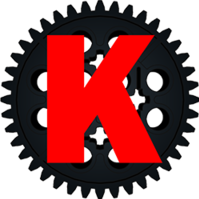
[MOD] Motorized Bugatti Bolide 42151
KirTech LAB posted a topic in LEGO Technic, Mindstorms, Model Team and Scale Modeling
Hi everyone! I'd like to share my new motorization project. This time I've modified Bugatti 42151: BuWizz 2.0 receiver as a power source, BuWizz-motor for rear-wheel drive and PF servo-motor for steering. As usually I tried to keep the original look of the set as much as possible and it was unexpectedly difficult to place all the electronic components. The main problem is a width of the model - the inner space between doors is only seven stud wide, so it's impossible to place the receiver between the doors as it's eight stud long. So I've ended up with pretty unconventional receiver placement. You can find details and test-drive in my video: Thanks for watching :) -
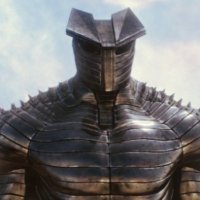
[MOC]◄Dodge Challenger 2008 SRT►[2021]
Michael217 posted a topic in LEGO Technic, Mindstorms, Model Team and Scale Modeling
Welcome to my garage LEGO!!! Hello! My name is Michael. I'm a Builder from Russia, I love muscle cars! Dodge Challenger 2008 SRT Hello everyone It's the first of August and I'm in a hurry to share with you another project! This time I collected the younger Dodge) And this is the third car of this brand in my garage! Description: - Drive - 1 Buggy motor - Steering - Servo - Nutrition-Small BB - Brain RC brik - Independent front suspension - Rear suspension bridge with four-point mounting - The steering wheel turns with wheels - Open the doors, hood, sunroof - Well-designed interior and under-hood space - About 2000 parts Instagram: https://www.instagram.com/lego_muscle_garage/ Join my group in VK: https://vk.com/legomusclegarage All photos on the link: https://bricksafe.com/pages/Michael217/dodge-challenger-2008-srt Enjoy your viewing! Rate, comment! Thanks!) -
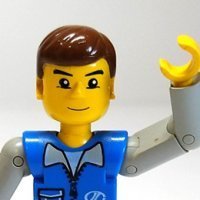
[MOC] Off-road truck Gaz 66[instructions available]
keymaker posted a topic in LEGO Technic, Mindstorms, Model Team and Scale Modeling
Hi, I would like to present my newest creation – off-road truck Gaz 66. It is my interpretation of small, old and very popular truck, which has a lot of off-road capability. Someone can ask why next similar small scale off road truck? I would say I like this type of vehicles, the scale and challenges they bring. And with every build I try to test something new, which I wasn't try before. Here the main goal was to go below standard for those wheels width of the model - 15 studs and prepare narrower axles than standard - 11 studs ones. Which I did. Gaz 66 has 13 studs width body with 9 studs (from rim to rim) front axle - stereed and driven. Thanks to that size of the body is more proportional to used wheels. And you can also use tractor tires provided with cargo for even better effect (you can see such modification in real Gaz 66 on one of polish off-road YT channel - LINK). I also tried to add as many details related to real truck as possible, in this scale, I hope there are here some fan of original Gaz 66 and they will recognise some elements I added. Below you can find video and list of features and details. Enjoy. Instructions: LINK General details scale: 1:20 dimensions LxWxH: 30x10,5x12,5cm weight: 946g Features: RC front axle steering (C+ L motor) RC 4x4 drive (C+ L motor) RC winch with place to lock the hook (C+ L motor) 4-link live axle suspension for all 4 wheels three studs ground clearance (with "KrAZ" tires) openable doors and easy access to spare tire working V8 engine with fan located in cabin, plus grill via which working engine can be watched detailed two seats cabin powered by Buwizz 3.0 but also prepared to be powered by standard C+ Hub can operate with "KrAZ" tires included in cargo Photos: LINK My Gaz 66 is powered by Buwizz 3.0, but there is no problem to use standard C+ Lego battery box: Internals of the MOC, so drivetrain connected with V8 engine, steering and the winch: -

[WIP] Mack Granite Boom Truck
JLiu15 posted a topic in LEGO Technic, Mindstorms, Model Team and Scale Modeling
With the gearbox-controlled mechanisms on my MCI D4500CT model proving to be impractical, I did not want to just abandon the gearbox design. Because of this, I decided to incorporate it into a different vehicle. I decided that a boom truck like the following would be god for a four-output distribution gearbox: I have not seen many boom trucks in this style done in LEGO Technic. I've seen plenty of mobile cranes, knuckle boom cranes, etc, but I figured this would make for a unique build, especially as I see plenty of these here in the US. The turntable for the crane is also mounted higher up (at the same height as the roof of the cab), so that'll provide more space for mechanisms. As of right now, the chassis consists of essentially everything to the rear of the wheelchair ramp module on my MCI D4500CT model. A difference is that both rear axles are driven, as opposed to one driven axle and one tag axle. The gearbox outputs will control the outriggers, boom rotation, boom elevation, and either boom extension or winch. There can only be two functions routed through a turntable in order to allow for unlimited rotation, so one of the boom functions will have to be manual. Because the suspension design is identical to that of my MCI D4500CT model, this model will also serve as a test bed for the drivetrain and suspension on my MCI D4500CT model. If everything works well here, I can be pretty confident using this suspension design. Let me know if you have any suggestions for me! Photos: -

digitizing pneumatic piston position
Technic tango posted a topic in LEGO Technic, Mindstorms, Model Team and Scale Modeling
Im trying to make return to center steering with pneumatic pistons due to not being able to use LAs or servos in a particular location. has anyone ever needed to "know" where their pneumatics are? I thought about using a spool of string attached to the end and a potentiometer on the axis of the spool to get a reading of where it is, but maybe there's a better way, with or without electronics. here's my driven, suspended, and hopefully, steered bogey I am trying to implement this on:bogey picture- 7 replies
-
- pneumatics
- electronics
-
(and 1 more)
Tagged with:
-

[MOC] 1:48 Pennsylvania Railroad Q2 Duplex (PF / PU)
Commander Wolf posted a topic in LEGO Train Tech
Hello all, I have recently built a model that might actually deserve a post. This is a working, running (albeit only on R104 curves) 1:48 scale model of the Pennsylvania Railroad Q2 duplex. PF or PU motors power all five driving axles, and the design uses no third party parts besides #11 drivers. See the video for a more detailed description. -

[REVIEW] 42082 - Rough Terrain Crane
Jim posted a topic in LEGO Technic, Mindstorms, Model Team and Scale Modeling
REVIEW - 42082 - ROUGH TERRAIN CRANE INTRODUCTION The biggest set of the second wave of 2018 sets is the Rough Terrain Crane. Actually, it is THE biggest Technic set ever, with 4057 parts, surpassing the 42055 - Bucket Wheel Excavator, which has 3929 parts. This set contains 128 parts more than the BWE. Which immediately raises the question; has TLG purposely made this set bigger, so it has the highest part count ever? The reason I am asking out loud, is that there has been some debate in the Technic Forum about the growing size of the sets, related to the functions. Some say that the part count is intentionally high, without adding significantly more (or better) functionality. While I do see a trend in sets getting bigger (i.e. higher part count, thus higher price), I don't think that TLG designers are filling their workday finding out ways to add lots of unnecessary parts. I do like to think that the style of building is adapting/evolving to the contemporary standards/requirements. Of course, I don't want to sound too naive, because at the end of the day, it's all 'bout the money. It's all 'bout the dun dun do do do dumb. I don't think it's funny to..... Anyway, why not use this review to dive into this delicate matter. Before we start I like to point out that I do like big sets. The experience of opening the box and seeing the plethora of parts is overwhelming. On the other hand, with Technic sets getting more and more expensive, I can understand that people stop buying the (bigger) sets. In this review, I simply want to find out if this set could have been made with, let's say, 3000-odd parts while maintaining the same functionality. Another thing I'd like to address in this review is the use of extra elements (playable items), like a chains, tools etc. There has been some debate about this in the Technic forum, so I like to give you my opinion. If you see this icon, you can click the image on the left or right side of the image, to cycle through alternative images. PICTURES Pictures can be clicked to view hi-res versions. More pictures can be found in my Flickr album. DISCLAIMER This set has been provided by the CEE Team of TLG. It's not my goal to promote this set. It's my goal to give you an honest opinion about it. Therefore, the opinion in this review is my own and is in no way linked to TLG. SET INFORMATION Number: 42082 Title: Rough Terrain Crane Theme: Technic Released: 2018 Part Count: 4.057 Box Weight: > 5kg (I forgot to weigh the box, because my kitchen scale couldn't handle it.) Box Dimensions: 57,5 cm x 47,2 cm x 16,5 cm Set Price (RRP): £ / $ 299.99 / € 229,99 Price per Part: £ / $ 0.074 / € 0,056 Links: Brickset, Bricklink So, with an RRP of 229 euro, the price per part comes down to 5,6 cent per part, which is a steal. It's even slightly less than the BWE (5,9 cents per part). This makes it one of the cheapest Technic sets in terms of price per part. Let's compare some stats with previous flagships. COMPARISON WITH OLDER SETS 2011 - 8110 - Unimog - 189 euro, 2048 parts, 9,3 cent per part. 2012 - 9398 - 4x4 Crawler - 169 euro, 1327 parts, 12,8 cent per part. 2013 - 42009 - Mobile Crane Mk II - 199 euro, 2606 parts, 7,7 cent per part. 2014 - 42030 - Volvo L350F - 219 euro, 1636 parts, 13,4 cent per part. 2015 - 42043 - Arocs - 199 euro, 2793 parts, which is 7,2 cent per part. 2016 - 42055 - BWE - 229 euro, 3929 parts, 5,9 cents per part. 2017 - 42070 - All Terrain Truck - 249 euro, 1862 parts, 13,4 cent per part. 2018 - 42082 - Rough Terrain Crane - 229 euro, 4057 parts, 5,6 cent per part. All of these sets have Power Functions, some more than others. The Volvo is literally packed with Power Functions, which explains the high price and low part count. A potential candidate for a comparison with the 42082 - Rough Terrain Crane is the 42009 - Mobile Crane Mk II. The 42009 packs 2606 parts for 7,7 cent per part, while the 42082 packs 4057 parts for 5,6 cent per part. So, the universally praised Mk II crane has a 37,5% increase in price per part. Or the 42082 has a 27,3% decrease in price per part, depending on how you want to look at it. That is 5 years ago, and I'm not taking inflation into account. In other words; for 30 euro extra you get 1451 extra parts. This comes down to 2,1 cent per parts, which isn't bad at all. Some of you might argue that this is not the way to compare two sets, but these numbers are based on RRP and part count, which are numbers we can work with. Since this set has four of the big Claas wheels, a gearbox, and not a lot of PF, I could also compare it to the 42070. But that set was way overpriced, so I don't think that would be fair. The average price of a part in a flagship, based on these 8 sets, is 9,4 cent. So for 229 euro you can expect 2155 parts. You get 1901 more than that. Thus drawing the preliminary conclusion that this set is big, but the price is more than reasonable. Of course, the original debate wasn't focused on the price per se, but whether the models are getting unnecessarily big. Let's carry on unboxing so we can find out. THE BOX The front of the box shows the model and its Power Functions components, a Battery Box and a Large Motor. No sign of new Powered Up elements yet. It also shows a picture of the model with an extended boom, measuring 100 cm high till the end of the boom and a chassis size of 48 cm long. Going by the size this isn't some two-bit crane. But size doesn't always matter. The box has the same width and height as last year's flagship (42070 - 6x6 All Terrain Truck), but it's a couple of centimeters deeper. INSIDE FLAP Like the 42070, this box also has the flap, common to flagship sets. The inside shows a big picture of the model, which is most likely almost 1:1 scale. It's pretty impressive, that's for sure. You can also see that the upper body with the boom can rotate freely, thus 360 degree. This means that most of the mechanics, and battery box, are probably placed in the upper body and not in the chassis. This makes sense, and we have seen it before. Another picture shows the boom can be raised up to 60 degrees. BACKSIDE The back is divided into two sections/sides. The left side shows the functions of the main model, while the right side shows the alternative model, a Mobile Pile Driver. I will express my love for the B-model later this review CONTENTS OF THE BOX The box contains: 1x Inner box 1x Sealed pack with two booklets and the sticker sheet 4x Rim 4x Tire 25x Numbered bags (8 of which are in the inner box) INNER BOX The inner box contains the sealed pack with instruction booklets and sticker sheet. And it contains the bags for steps 1 to 4. INSTRUCTION BOOKLETS Two instruction booklets. One for the chassis and one for the crane. Makes you wonder if one person can start building the chassis, while the other starts working on the crane. STICKER SHEET Quite a few stickers to decorate this model. A construction vehicle just isn't the same without black and yellow stripes. And of course, a bunch of stickers indicating how to operate the functions. POWER FUNCTIONS ELEMENTS A battery box and a large motor. TIRES These, so called Unimog Tires, seems to be very common nowadays, but they have only been used in two Technic sets before. RIMS Four big red rims, also used in the 42054 - Claas Xerion and the 42077 - Rally Car. TIRES ON RIMS Here a picture with the tires fitted on the rims. NUMBERED BAGS A total of 25 numbered bags. HIGHLIGHTED PARTS Actually there is only one interesting part in this set and that is the 11 x 11 Curved Gear Rack (or banana gear as some call them) from the 42055 - Bucket Wheel Excavator in a new color black. I am very happy that this gear has appeared in a color which can more easily be used in a MOC, for example an EV3 Robot Not sure why I forgot to take a picture of the part itself, but here is a picture of the subassembly. This set contains a total of eight of these curved gear racks. PART LIST A whopping 4.057 parts, but still only two pages with parts. THE BUILD Bags, bags, bags and more bags. Lucky for us, they are numbered. If you like a challenge, open all the bags and create a big unsorted pile. That will keep you busy for quite some time. I will simply go from step to step As expected we start with the chassis. And to be more precise; with the gearbox in the chassis. Really, orange pins?! Yes, really! Right off the bat, lots of gears are added to the chassis. A white clutch gear is used in the bottom of the chassis. This indicates that these gears/axles will be connected to the Power Functions. At the end of the first step the center of the chassis has finished. This chassis with center gearbox is kind of reminiscent of models like th 8110 - Unimog and the 8258 - Crane Truck. Lots of gears, densily packed in a small space. There's little room left. The bottom of the gearbox. This set contains the 5x7 frames in two colors, light bluish grey and black. This is what you can do with two different color frames. I am not really fond of these kind of solutions, but I understand it can be convenient. Ohhh, and then there's the green liftarms. Because we need green in a red vehicle. I reckon someone opened up the bucket with green dye, so we do need to use more of these of parts in green Actually, I am being semi-serious here. The Forest Machine uses these liftarms in green, so it's probably cost-effective to use them in multiple sets. We are seeing this with other parts as well. For example, the beforementioned orange 3L pins with bush and white 1L connector, etc. TLG tends to minimize the overall number of different parts used in (Technic) sets. I reckon this has something to do with optimizing their warehouse space. New parts are added every year and storage space is limited. Instead of using five different colors TLG uses one (maybe two) color. Doing this over the entire range of sets will save up a lot of space. Technic seems to be the ideal theme to use these kind of strategies. And it adheres to the "color vommit in the chassis" strategy. One of the wheel assemblies. As you can see there is no actual suspension. Not even pendular suspension. Which seems odd for an Rough Terrain Crane, but I am no expert. Here's the subassembly attached to the center of the chassis. An almost similar assembly attached to the other side. Instead of green liftarms, this one uses orange ones. This way you can more easily tell the sides apart. This is actually not a bad thing. I have mentioned it before, but I am actually a big fan of the color vommit approach. Altough I must admit that using these orange 3L pins with bush is definitely pusing it. Blue might have been a better choice, but that would have confliced with the Bugatti color scheme. Therefore, I think TLG made the decision to use orange in this as well. By the way; this set does also contain 40 of these 3L pins with bush in black. The picture below shows how you can align the wheels. After aligning them, you slide the 16T gear in position. When I was building the set, I wondered why there was space between the gear and the liftarm, but it soon made sense. A subassebly for the outriggers. I do like the design, but as with most outriggers on Technic models, they op...e....ra.....te.....ve......ry......slow......ly. I would love to show you a video of the outriggers, but since it's Tuesday now, I don't have enough time to lower them before the embargo date of this review Just kidding of course. They do take a while, but since they are outriggers I find this acceptable. As long as the other functions aren't that slow. The chassis with front and rear wheel assemblies, and the front and rear outriggers. This is what you would expect from a crane this size. No unncessary use of extra parts so far. Next stop is the V8 engine with white oil filter and orange propellor/fan. I really like the oil filter. It's simple, but it adds detail to the model. The choice of orange as the color for the propellor seems odd, but it's likely a safety precaution. The emphasize that this is a part you need to watch, since it will be rotating when you move the crane. Not entirely sure, but it must be something along these lines. After the engine you will be building the connection between the chassis and the upper structure (crane body). This is done by using eight curved gear racks and an ingenious system in between. Click on the images to construct the ring. At that point you will attach the rims and the chassis is done. Worth noting is that the wheel caps in the rims use a lot of extra parts. Per cap approximately 12 parts are used, which boils down to 48 extra parts, just for the caps. This picture will be very hard to shoot with the crane attached, so I will give it to you now. This model implements Ackerman Steering Geometry. Or Reversed Ackerman Steering. Or even Reversed Reversed Ackerman Steering hehe. Not sure what the consensus in the forum was. I am no expert on steering assemblies, but Ackerman Steering boils down to the inner wheels turning at a different angle than the outer wheels, due to the fact the outer wheels have to travel a wider diameter. Ackerman Steering is something Technic fans like to see in models. For more information I suggest you start with Wikepedia and go from there SECOND BOOKLET This is an interesting part in the build. Reminds us of the 8043 - Motorized Excavator. Admittedly, I didn't think of this myself, but it has been addressed in the forum. Since the two 20T Bevel Gear with Pinhole have been placed on opposite sides of the actuators, this results in them turning in a different direction when the boom is raised (or lowered). Basically, this means that when the boom is raised, one of the LA's extends, while the other retracts. If one of the 20T gears was placed the other way around, this problem would not occur. Of course, the turning direction of one of the axles feeding the LA should be reversed for this to work. Since the gears attached to the LA's only rotate a tiny fraction when raising the boom, it leads me to believe that this is a calculated flaw. In this video I try to demonstrate the issue at hand. You continue to work your way back to the rear of the superstructure. Again, lots of gears and space which will be filled with gearboxes. This is the point in the second booklet where you can't build any further, untill you finish the first booklet. At this stage you will attach the upper section to the chassis. The boom is really massive. Feels solid like a rock. I am impressed with the sturdyness of this boom. It does a lot of panels and H-frames, so it's only logical, but I was still impressed. No wormgear to extend the boom this time. The other side of the boom with a white clutch gear for safety. The boom attached to the crane. Needless to say I am having a hard time getting the entire boom in the picture. The back of the upper section is closed with panels. The black ones can be removed for easy access to the battery. There are two gearboxes on the top of the crane. The left (bottom) one is to switch between crane and chassis functions. The right (upper) one is to switch between raising/lowering the boom, extracting/retracting the boom and lowering/raising the hook. The chassis functions are rotating the super structure and raising/lowering the outriggers. COMPLETED MODEL It is rather difficult to shoot decent pictures in the photo studio. I sure hope sets won't get much bigger than this. Looking at this model, I think TLG has done a remarkable job with this Rough Terrain Crane. The black chassis, with red elements, combined with the red super structure looks spot on. Lots of technic gears and elements provide an interesting build. I love how the two (or three) gearboxes work together. Here you can clearly see the gearbox on this side of the chassis is used to rotate the crane. Because of the weight, the chassis tends to bend a little, but nothing to worry about. The boom of the crane can exend way more than this, but that makes is impossible for me to take pictures. A close up from the front of the vehicle. The cabin door swings open to reveal the interior of the cabin. And one from the reaar. I'm sorry I don't have anymore pictures of the completed model, but I think you have seen most of it. You can find out more by building it yourself FEATURES AND FUNCTIONS This model packs features you would expect from a mobile crane. Raising/Lowering the boom Extracting/Retracting the boom Raising/Lowering the hook Raising/Lowering the outriggers Four wheel (Ackermann) steering Working fake engine Other than that there are some details like two cabinets which can be opened to store some gear. TLG has even added some walls which can be turned into part of a house or cabin. OUTRIGGERS Okay, let's get this out of the way. The outriggers are slow, really slow. I turned them on this morning and when I came home from work, they were halfway. Obviously, I am joking...I didn't go to work today. It's not that bad, but it would be nice if they operated a wee bit faster. You do need to use the four plates for them to properly reach the ground. STEERING AND DRIVING For a set this size steering and driving work properly. Even better than I expected. CRANE The thing I am most impressed with are the crane functions. These work like a charm. And, unlike the 42043 - Mercedes Arocs, this gearbox (or rather gearboxes) is very easy to understand. One look at the stickers is all it takes to be able to operate this thing. It offers a ton of playability. Linking gearboxes, instead of direct connection to a motor, can cause some slack. This can be seen when turning the crane. But this is just a minor gripe, just like the outriggers. DOOR A nice detail is the sliding door. PLAYABLE ITEMS It's time to talk about the added playable items, like this toolbox. Some people don't feel this is necessary and some even seem to be a bit annoyed by it. I have addressed this in my 42069 - Extreme Adventure review where I state that I like these added details. And I still do. The Forest Machine also packs some extra's like a chainsaw, some logs etc. Actually, I see it in most of the Technic sets. What I have seen is that this greatly enhances playability for younger LEGO fans. I am absolutely aware that this is a 11+ set, so it is not designed for a 5-year old. But seeing a 5-year old play with these Technic models and use all the extra items in the set for his "story" makes you realise that by adding playable items to a Technic set, it suddenly becomes a set for all ages. So, a handful of extra parts might be enough to prepare a 5-year old for Technic enthusiasm later down the line. After all, he (or she) is the future Technic target audience. Therefore, I am 100% in favor of adding these little details to Technic sets, even if these sets are 11+. PART COUNT And now for the part count discussion. No doubt this model could have been made using less parts. It you take away the playable items, wheel caps, grey construction panel and outrigger plates, you already save a couple of hundred parts. In the old days a Technic model used to be liftarms with gears inside. These days are over. Models are becoming more and more realistically looking, which means that less of the interior is visible. This also goes for the boom for example. In the old days we would have seen the interior of the boom and now it's covered with panels. I am not convinced that TLG is deliberately adding parts to the boom just to have more parts. I think TLG is doing this because they need to compete with other toys in the stores and these toys look like the real thing. Therefore TLG wants its models to look more like the real thing to, resulting in adding panels and other embellishments. Granted, TLG's marketing department won't mind having the biggest Technic set every year, so they can use this in Ads. Like I said in the introduction; I am a fan of big sets. I love putting together a 4057 part set. But I reckon people are more upset about the price of bigger sets than the part count. This can be a false assumption, because I know not all AFOLs think like this. But if TLG had used 3057 parts instead of 4057 they could have easily maintained the same RRP. 3000 parts at 229 euro is 7,6 cents a piece, which is still rather cheap. So my conclusion is that TLG might have upped the part count a bit, but still presented this set at a very affordable price. We already see this set popping up for around 179 euro, which boils down to 4,5 cent a piece, which is extremely affordabl for a Technic set. For me it would have been an issue if TLG priced this set at 349 euro RRP. Then I would have figured TLG was doing it on purpose. Basically, this is a UCS-like Technic set and you get it for 229 euro, or less if you do some online shopping. Personally, I think this is extremely good value for money. Of course your mileage may vary, but this is how I see things. B-MODEL The B-model, a Mobile Pile Driver, is a cop out, nothing more, nothing less. I mean, seriously?! 4000+ parts and we get a model that is 95% the same as the original model. And if that's not the worst part, it's ugly AF, as some people would like to phrase it. The Pile Driver extension looks like something I could have built....when I was four . Maybe, well probably, I am insulting someone at The LEGO Group, but I can only hope that they were lacking time and/or resources, so they came up with this at the last moment. The argument of time is rendered invalid, because this is what you can in a couple of days. Well, maybe not everybody, but @nico71 was able to turn this set into a front loader. Nobody will probably argue that this would have been a better B-model. Not sure what TLG's policy is regarding alternate models but the 42030 isn't in production anymore, so I don't see any reason not go for something like this. The rear view of the model. And even the grey construction elements can be turned into something useful. SUMMARY I am a big fan of this set. It packs a lot of functionality and parts, for a decent price. The forum contains pages and pages with potential improvements, but that's out of scope for my review. Almost every set gets improved by AFOLs, so that's no surprise. Bottomline is that this is great set for existing AFOLs and new AFOLs alike. I can remember coming out of my dark ages in 2005, building the 8421 - Mobile Crane, which had a whopping 1885 parts. I remember the endless quantity of parts coming out of the box. Imagine a set with more than twice the part count. And again, this doesn't automatically mean a better set, but you will be impressed when you open this box. Much has been said about the color vommit in the chassis of this model. I have grown fond of color vommit, because I like the variety in the parts. I do enjoy seeing all the colored parts. However, using orange 3L Pins with Bush is pushing it to the limit, especially on a red model. I would have preferred blue instead of orange. My final conclusion is that for around 200 euro, you do get a LOT of value for money. I can see myself getting an extra copy, just because of that. I would almost go as far a stating that this could be considered a UCS Technic set. PROS Good looking model Properly working functions (even Ackermann steering) Several (linked) gearboxes Great parts pack (especially for people new to Technic) Very affordable, almost cheap CONS Some slack due to drivetrains and gearboxes Outriggers operate very slowly No suspension No special parts besides the new curved gear rack in black SCORE How do I rate this set? 9 DESIGN I love the looks, color scheme, everything. 9 BUILDING EXPERIENCE Very enjoyable build with several gearboxes and other functionality. 8 FEATURES Great features, with some room for improvement. No suspension though. 9 PLAYABILITY Implemented features provide lots of playability. 8 PARTS Mostly common parts, but you do get a lot of them. 10 VALUE FOR MONEY Price goes down to 4,8 cent per part if you shop around. It doesn't get any cheaper than this. 8,8 UCS ANYONE? Thanks you for reading this review. All pictures can be found here. -
Hello and welcome to the page! One of my favourite sets ever! It became a part of my collection in a veeery long and hard way several years ago. I was thinking to motorize it several times. Simply install several motors was easy deal, but I wanted a suspension also. This requires fully rebuild the chassis. So, initially I built a completely new scale RC chassis, then adapt it for 8285 outriggers, that adapt it for the 8285 crane then adapt it again for the 8285 cab. I tried to keep as much from original iconic 8285 as possible. None of the 8 PF motors is visible One BIG battery box + 2 sBricks OR two sbricks 2.0 can be used to manage al 8 channels. The only manual feature is a pneumatic polarity switcher, because it would be a 9th channel. Full suspension, rear based on 42043 Arocs set. Servo for steering 2 XL for drive M for outriggers L for pump M for winch L for crane raise L for boom extensionin Please enjoy! https://bricksafe.com/pages/Aleh/liebherr-lrb-355/rc-8285-rescue-tow-truck Truck now uses 6 soft shock abosorbers. To keep it higher it will be enough to replace first rear axle to yellow shock absorbers.
-

Motorised Johnny 5 MOC <Not an Alternative Build>
RJ BrickBuilds posted a topic in LEGO Technic, Mindstorms, Model Team and Scale Modeling
01 by RJ BrickBuilds, on Flickr Hello, Bozos! You can support Johnny 5 on Lego Ideas to turn him into an Official Johnny 5 Lego Set here: Johnny 5 on Lego Ideas Who is Johnny 5? Those who don’t know him, Johnny 5, also known as “S-A-I-N-T Prototype Number 5” or Number 5 for short, is a very lively and inquisitive military robot prototype who’s perpetually hungry for more “input”. He is the star of the 1980’s movies Short Circuit and Short Circuit 2 and a TV special called Hot Cars. He became sentient when he was luckily struck by lightning during a combat demonstration. Although he is designed to serve the military as a robot prototype, he has an adorable child-like behaviour and has a great respect for life. He is a peace-loving robot and refuses to use his military capabilities to harm others. Despite being very intelligent and inventive, his naivety and trusting nature has been taken advantaged of on several occasions. Design This model is fully motorised using Powered Up motors and hub and controlled through a mobile device using the Powered UP App. It uses Technic parts to ensure stability of the structure, and System parts to capture the look and form of Johnny 5. The following are the playable features of the model: Movement – This model can move around on tank tracks and uses skid steer to change directions. Body – Johnny 5’s body can tilt using a Powered Up L motor and controlled using a mobile. Arms – Arms can be raised and lowered individually using the Powered Up App. The fingers can be adjusted manually as well as the elbows. Head – The head can be tilted and turned using the Powered Up App. Eyebrows – Eyebrows can be manually adjusted to suit the desired facial expression. Laser – The laser at the back can be raised and lowered using the Powered Up App. Watch the YouTube video here to illustrate these functions better: Johnny 5 on Youtube Total Pieces: 2,711 Dimensions: Studs: W 68.4 x L 36.1 x H 73.5 Inch: W 21.5 x L 11.4 x H 23.2 cm: W 54.7 x L 28.9 x H 58.8 Weight: 99.8 ounces or 2.83 kg Johnny 5 MOC Pictures: 02 by RJ BrickBuilds, on Flickr 03 by RJ BrickBuilds, on Flickr 06 by RJ BrickBuilds, on Flickr 05 by RJ BrickBuilds, on Flickr 04 by RJ BrickBuilds, on Flickr 07 by RJ BrickBuilds, on Flickr 08 by RJ BrickBuilds, on Flickr 09 by RJ BrickBuilds, on Flickr 10 by RJ BrickBuilds, on Flickr -
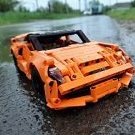
[MOC] 42148 Wheel loader
ilyabuilder724 posted a topic in LEGO Technic, Mindstorms, Model Team and Scale Modeling
My 2nd aternative build for the 42148 set. A simple Wheel loader. I hope you're gonna enjoy the build! Feel free to share your pictures of assembled model! FEATURES Steering Working arm Additional palette to carry -
The automatic sliding door is part of my 7-Eleven building. I also prepared the step-by-step instruction in my video, in case you want to build one. More MOC on my homepage: https://www.bricksboy.com/moc
- 3 replies
-
- tutorial
- sliding door
-
(and 2 more)
Tagged with:
-

Davejsp's Technic creations
BrisquesDesigns posted a topic in LEGO Technic, Mindstorms, Model Team and Scale Modeling
deleted- 28 replies
-
- remote-controlled
- powered up
-
(and 4 more)
Tagged with:
-

42131 CAT Dozer outdoor experience
KirTech LAB posted a topic in LEGO Technic, Mindstorms, Model Team and Scale Modeling
Hi! I'd like to share some thoughts regarding a winter test-drive of my 42131 CAT D11 Dozer. The first indoor tests left very good impressions, and I was excited to try it outdoor. I still remember a short video from the official LEGO website, were the 8275 Dozer pushes snow (it was about 15 years ago :)) The set isn't new, I tried to find something similar here, but without any results. Sorry, if this topic has been already discussed. - Let's begin with the most important function - a motion. It works very well indoor, especially on a soft surface, but for moving in snow grousers are too small. Of course the model can push some amount of snow but it tends to stuck and skid. Some additional beams on tracks will improve the situation. - As we know, the blade elevation in a stock model works extremely slow, I tried to solve this problem by replacing gears near the actuators. Instead of 12:20 reduction I've done 20:12, but the system even couldn't complete a calibration, so I ended up with 12:12 ratio. But in outdoor conditions (it was pretty cold) it didn't work, probably because of accumulators voltage drop. So, during the test-drive I couldn't change the elevation at all. And as a result, I also didn't use a blade tilting mechanism. - Of course, the ladder mechanism works perfectly in any conditions :) - And the last function - a ripper. If we follow building instructions of the set, ripper won't even touch the ground, so it's necessary to change its connection points. The ripper works very well in loose snow. It would be cooler to have three teeth instead of one, but there is a risk, that it will be not a ripper but anchor, because of low tracks friction :) So, without any modifications the model has pretty low performance in snow (yes, I'm spoilt by BuWizz and buggy-motors). But I had a lot of fun during these tests, you can check the dozer in action: Thanks for watching! -

[HELP] FWD with Transversely Mounted Engine and Gearbox
AttentionSpanner posted a topic in LEGO Technic, Mindstorms, Model Team and Scale Modeling
Hi everyone, This will be my first project in a while, and my first project here. I want to try and make a 2WD (hopefully FWD, but RWD is fine if things get difficult), 4-cylinder car with a transversely mounted engine and gearbox assembly, and hopefully as a studless construction. I started mocking-up some of the gearbox in LDD (I know, not the best tool), and the results have not been too encouraging (space-wise). I haven't yet figured how to post photos, but I will when I do -
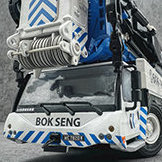
[MOC] Unimog 4×4 Off-road RV
dls7223685 posted a topic in LEGO Technic, Mindstorms, Model Team and Scale Modeling
Hello everyone, this is the latest work from MTC: Unimog 4×4 Off-road RV Designed by Muen Function Description: ① 2×XL: providing power ②1× servo: steering.×M: 2-speed gearbox shift. -3×M - 3 differential locks for front, middle and rear. -2×SBrick. -1×Small battery box. -8×Yellow hard springs. -

[MOC] Working Icebreaker
KirTech LAB posted a topic in LEGO Technic, Mindstorms, Model Team and Scale Modeling
Hi! It's not a new MOC, but finally I was managed to film a video with English comments, so here you can find a piece of true winter :) The model is 73 cm long, weights 2.4 kg (without underwater stabilizer) and contains seven motors and 2x Buwizz receivers. The main feature of the model - it can really break the ice. Functions: buggy motor for the screw, working rudder, two drills and adjustable trim of the vessel. More photos you can find in the album: https://www.flickr.com/photos/141718063@N06/albums/72177720295371540 Thanks for watching :)- 14 replies
-
- icebreaker
- moc
-
(and 2 more)
Tagged with:
-
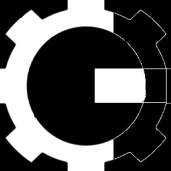
[MOC] 42099+42110 Defender RC conversion (Control+)
cyberdyne systems posted a topic in LEGO Technic, Mindstorms, Model Team and Scale Modeling
Good day, everyone! This project has started as an idea of creating better a bodywork for 42099, but after some time in development it turned into undependent rc modification of Defender 42110. I took inspiration from Bowler WildCat and Bowler Nemesis which are extreme buggy-like offroaders based on Land Rover cars. So I pondered the question, What if... new Defender would be made into Bowler? In result - original defender has become lower, has got lower roof profile, bigger tires, front and rear pushbars, snorkel pipe, stronger footrests, two sets of additional lights and fog lights, antennas, front and rear mudguards, some chains ('cause chains are cool!). Engine was swapped from 6-inline to V8-supercharged! (After I made this model in spring, LR has announced that they will actually make a V8 Defender. Sadly, not supercharged :) Engine and cooling fan are connected to the front axle via chain links. (Yes, chains ARE cool. I had to buy whole Ducati set for this) And the most important - Control+ components. As this Bow-fender shares control profile with 42099, set of electrics is the same. One XL+ for each axle One L+ for steering SmartHub for SmartThings And then I found out that I am... well... not really good in making offroad chassis. At least it was my first try. So I tuned it as much as possible and made a note for future to learn more about lego offroading. (I think, I'll start with Zetros). Video of how this Bow-fender drives on everything it can is of course here: Watch till the very end! And Thanks for watching. Subscribe. P.S. This cat was walking nearby, while I was making video, so I asked him to participate. So there is A cat in the video now, instead of THE Cat - erpillar :) -

42053 - Volvo EW160 - Mods and Improvements
gvo25 posted a topic in LEGO Technic, Mindstorms, Model Team and Scale Modeling
Hello everybody, I didn't notice yet any MOD page of the Volvo EW160 excavator. I find this a really good set and as I'm an excavator lover, I couldn't resist to add a few modifications. I have already done 2- 3 and I have others in my mind. Here are the first ones I took away the cab elevating mechanism. I find the excavator better proportioned this way. It looks a lot more like the real machine and IMHO also a lot nicer. The cab was in the original model too much forward and got in the way of good playability. I still have to get rid of the grey beam behind the cab. I also put a swivel and turning mechanism on the grab, which also looks better and approaches the looks of the real machine. The mods I'm planning is to arrange the hoses on the boom and add rigid hoses.- 56 replies
-
- volvo EW160
- MOD
-
(and 1 more)
Tagged with:

